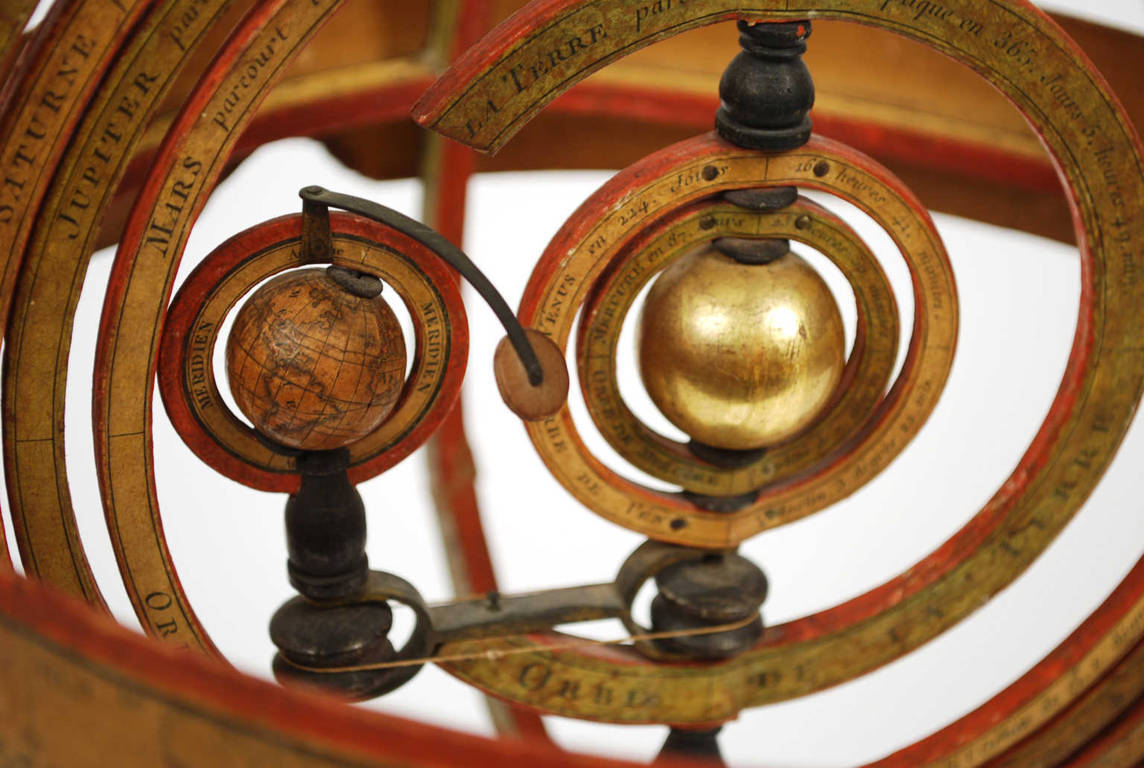1730470076Code 8020 Antique TelescopeBrass telescope with mahogany wood handle, focusing on an extension, instrument complete with sunshade extension and dust protection tabs. Signed Dollond London Day or Night from the mid-19th century. Maximum length 92 cm, 36.2 inches, minimum 51 cm, - 20 inches focal diameter 3 cm - 1.2 inches. In good condition, fully functional and complete with custom-made wooden and brass support base. To focus the telescope you need to lengthen it completely and then slowly shorten it until the image is in focus.
John Dollond (1706-1761) English astronomer and optician was born to Protestant parents who came from Normandy, who for religious reasons had been forced to move to England. Having a great predisposition for mathematics and astronomy, he decided to dedicate himself to the construction of instruments together with his son Peter (1730-1821), who encouraged him to study optics and mathematics, and in 1752 he started a business that soon achieved great success. From 1753 John Dollond was in contact with James Short and other members of the Royal Society of London to whom he reported his discoveries and his always innovative technical choices. He was the first to patent and market the achromatic telescope, an instrument that was born after several experiments and studies by academics from various parts of Europe.
In 1758 his composite objective was officially recognized and accepted by the Royal Society, even managing to obtain the prestigious Copley Medal, the most important prize obtained for scientific research work, created after a bequest of £100 in 1709 to the Royal Society by Sir Godfrey Copley, a wealthy South Yorkshire landowner; he himself became a Fellow of the Royal Society in 1761. In 1765 his son Peter, who had succeeded him at the helm of the laboratory, proposed a lens with three lenses, two concave and one convex, a solution which allowed the reduction of spherical aberration and the production of lenses which had larger dimensions for the same focal length. . The family business was also successfully continued by Peter's nephew, George (1774-1852). George studied and apprenticed with his uncle from 1804 to 1856 and then, on the death of his other uncle John J., he joined the firm as a partner, at 59 St. Paul's Churchyard, London. He was William IV's trusted optician and published some publications around 1819. In 1821 he remained alone at the helm of the "shop", which still exists today under the name of Dollond & Aitchinson Ltd., after the merger in 1927 with Aitchinson, a company founded in 1889 by James Aitchinson. Dollond & Aitchinson Ltd. is one of the largest opticians in Europe, and it is interesting to remember that in the 1970s, among other things, it bought the Italian Salmoiraghi.
According to legend, one unspecified day in 1608 the children of Hans Lipperhey, who was an eyeglass maker from Middelburg, were playing with lenses in their father's workshop. When one of the sons placed a concave lens near his eye, holding a convex lens in the other hand, and holding out his arm towards the tip of the bell tower of the cathedral, looked through it, he saw the weathercock that was on the top grow bigger and get closer. . Having immediately shown the phenomenon to his father, he fixed the lenses on a board to make observation easier, thus creating the first rudimentary telescope. Unfortunately for Lipperhey, however, when he presented a patent request for this instrument to the States General, within a few days other Dutch eyeglass makers also claimed the invention.

























